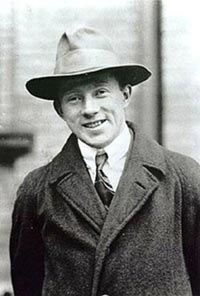
| Born: Dec 5, 1901 in Wurzburg, Bavaria, Germany |
| Died: Feb 1, 1976 (at age 74) in Munich, Bavaria, West Germany |
| Nationality: German |
| Famous For: Uncertainty Principle Heisenberg cut, Heisenberg’s entryway to matrix mechanics, Heisenberg ferromagnet, Heisenberg group, Heisenberg limit, Heisenberg’s microscope, Heisenberg model (classical), Heisenberg model (quantum), Heisenberg picture, Matrix mechanics, Euler-Heisenberg Lagrangian, Kramers-Heisenberg formula, Bootstrap model, C*-algebra, Exchange interaction, Isospin, Mott problem, Quantum fluctuation, Resonance (chemistry), S-matrix and S-matrix theory |
| Awards: Nobel Prize in Physics (1932) and Max Planck Medal (1933) |
Werner Heisenberg was born on December 5th, 1901 in Wurzburg, Germany. His father, Dr. August Heisenberg, was a professor of Greek Philology. Heisenberg started schooling in a primary school in Wurzburg before moving with his father to Munich in 1910. He joined the Maximillian School for his secondary school studies until 1920 when he joined the University of Munich to study physics under the supervision of scientists like Sommerfeld, Wien and Rosenthal. During the winter of 1922 to 1923, Heisenberg attended the Georg-August-Universität Göttingen where he studied physics under Max Born and David Hilbert.
Discoveries and Achievements
Werner Heisenberg was a German theoretical physicist whose work in science led to his overwhelming popularity. His influence on contemporary physics ranks alongside other famous scientist like Richard Feynman, Paul Dirac and Niels Bohr.
Heisenberg’s work with matrix mechanics was one of the first and most useful formulations that led to his discovery of quantum mechanics in 1925. During this time he wrote more than 600 research papers, explanations and philosophical essays based on his discoveries in matrix mechanics. However, his discovery was abstract in nature and difficult for many people to visualize. His writings on matrix mechanics are still available for reading as collected works.
It was through the discovery of matrix mechanics that Heisenberg formulated quantum mechanics. This is a type of mathematics in physics that measures the interaction of atomic and subatomic systems with radiation. Heisenberg measured their interaction based on observable quantities such as momentum, energy, angular momentum and position.
In 1932, this German theoretical physicist was awarded the Nobel Prize for Physics, a prize attributed to his creation of quantum mechanics. In spite of difficult political and economical problems, Germany became the leading country in quantum mechanics in the 1920’s courtesy of Heisenberg. The creation of quantum mechanics led to, among other things, the discovery of the allotropic forms of hydrogen.
Heisenberg unveiled his uncertainty principle in 1927. The uncertainty principle, also known as an indeterminacy principle, was one of Heisenberg’s earliest breakthroughs. His uncertainty principle states that the more accurately one can determine the location of a particle, the less precisely its momentum can be determined. The converse is also found to be true.
Later Life and Death
Heisenberg played a vital role in reviving German science after years of war. In his later years, he assumed influential positions in Germany and abroad. He gave lectures on theoretical physics and other subjects. He succumbed to cancer of the gall bladder and kidneys on February 1st, 1976 at the age of 74.